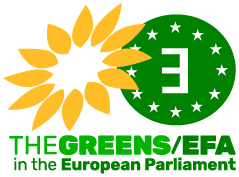Brussels, 20 January 2015
Dear Commissioner Andriukaitis,
We are writing to you with regard to your responsibilities to establish horizontal, science-based criteria for endocrine disrupters.
Endocrine disrupting chemicals cause adverse health effects in an intact organism. This is particularly relevant during pregnancy, where it can affect developmental processes of the foetus in an irreversible manner. Cancer, infertility, diabetes, obesity and behavioural disorders have all been linked to exposure to endocrine disrupters. You can find an overview over the relevant science in the joint WHO-UNEP report « State of the science of endocrine disrupting chemicals – 2012 » and in the « State of the Art Assessment of endocrine disrupters » commissioned by the European Commission .
Every year, exposure to endocrine disruptors has been estimated to cost up to thirty-one billion euros in the EU .
Back in 2009, the European Parliament and the Council adopted the Regulation (EC) No 2009/1107 on plant protection products. It included so called cut-off criteria for endocrine disrupters: active substances in pesticides should no longer be authorized if they were endocrine disrupters, unless there was a serious danger which cannot be contained by other available means, including non-chemical methods. Importantly, the Commission itself had proposed to include endocrine disrupters under the cut-off criteria (COM(2006) 388 final), but with a very vague definition of what should be seen as an endocrine disrupter.
Discussions about endocrine disrupters take place since at least two decades. The Community strategy on endocrine disrupters is from 1999, but no real action has resulted from it. One of the main reasons for that was that there was no clarity about the definition of an endocrine disrupter. For these reasons, the European Parliament insisted to end this uncertainty, resulting in two important modifications of the new law on plant protection products: firstly, concrete interim criteria for endocrine disrupters were adopted, and secondly, the legislator gave a mandate to the Commission to come up with permanent criteria by the end of 2013. In the context of the subsequent Regulation (EU) No 528/2012 on biocidal products, the European Parliament insisted on adopting the same provisions.
Due to the decision by the Secretary-General of the Commission in July 2013 to launch an impact assessment to identify the criteria, the Commission has failed to adopt the criteria by the end of 2013. This failure is subject to court proceedings, brought against the Commission by Sweden, with Council and the European Parliament joining the case in support of Sweden.
Without prejudice to our fundamental opposition to the launch an impact assessment on what is and should be a scientific matter, we would like to voice our strong concerns with regard to subsequent decisions taken by the Commission in the context of the impact assessment. The Seventh Environment Action Programme makes it clear that this issue is of horizontal nature: « the Union will further develop and implement approaches to address combination effects of chemicals and safety concerns related to endocrine disruptors in all relevant Union legislation. In particular, the Union will develop harmonised hazard-based criteria for the identification of endocrine disruptors ».
This line was followed in the roadmap adopted by the Commission in June 2014, which states that « these criteria should be developed with the aim of enabling their « horizontal » application in the wider legislation covering the regulation of ED in different regulatory settings. »
However, the current public consultation on possible criteria for endocrine disrupters is completely out of step with the roadmap.
It does not look at endocrine disrupters horizontally, but only at pesticides and biocides. Moreover, it makes the decision about what should be the appropriate definition for endocrine disrupters depend on the socio-economic impact on the industry and the substitutability of these substances when used as pesticides and biocides. However, such economic considerations are totally irrelevant when it comes to the question of what is an endocrine disrupter. Clearly, they are neither hazard-based, nor scientific in the strict sense of the term.
Finally, the public consultation also fails to respect the explicit commitment in the roadmap to consult on the benefits of the different options to identify endocrine disrupters.
In conclusion, and without prejudice to our fundamental opposition to the launch of an impact assessment, we urge you to stick to the Seventh Environment Action Programme and the Commission’s own roadmap and ensure that you work towards horizontal, science-based criteria fit for the various laws that address endocrine disrupters, including e.g. REACH and cosmetics legislation, instead of developing criteria based on a sectorial view (pesticides and biocides) based on economic impact alone, without even considering the benefits of different options for the criteria.
Yours sincerely,
Michèle RIVASI MEP (Greens/EFA)
Christel SCHALDEMOSE MEP (S&D)
Sirpa PIETIKÄINEN MEP (EPP)
Dario TAMBURRANO MEP (EFDD)
Gerben-Jan GERBRANDY MEP (ALDE)
Margrete AUKEN MEP (Greens/EFA)
Pavel POC MEP (S&D)
Nessa CHILDERS MEP (S&D)
Jytte GUTELAND MEP (S&D)
Frédérique RIES MEP (ALDE)
Younous OMARJEE MEP (GUE)
http://www.who.int/ceh/publications/endocrine/en/
http://ec.europa.eu/environment/chemicals/endocrine/pdf/sota_edc_final_report.pdf
[facebook_ilike]Articles similaires :
- Lettre au Président de la Commission européenne Barroso sur les perturbateurs endocriniens
- Perturbateurs endocriniens: lettre à la Commission sur l’évaluation de 700 substances chimiques
- Lettre à la Commission européenne sur les perturbateurs endocriniens (version anglaise)
- Obésité:lettre à la Commission européenne sur le médicament Mysimba/Contrave



[…] In the meantime, eleven MEPs from all political groups except European Conservatives and Reformists sent a letter to the EU Commissioner for Health Vytenis Andriukaitis, criticising steps taken by the Commission on the EDC criteria in recent […]